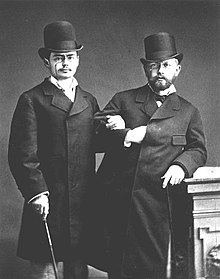
Eugène-Auguste Ysaÿe was a Belgian virtuoso violinist, composer, and conductor. He was regarded as "The King of the Violin", or, as Nathan Milstein put it, the "tsar".

The Violin Concerto in D major, Op. 35 was the only concerto for violin composed by Pyotr Ilyich Tchaikovsky. Composed in 1878, it is one of the best-known violin concertos.

Karl Yulievich Davydov was a Russian cellist, described by Pyotr Ilyich Tchaikovsky as the "czar of cellists". He was also a composer, mainly for the cello. His name also appears in various different spellings: Davydov, Davidoff, Davidov, and more, with his first name sometimes written as Charles or Carl.

Karl Klindworth was a German composer, virtuoso pianist, conductor, violinist and music publisher. He was one of Franz Liszt's pupils and later one of his closest disciples and friends, being also on friendly terms with composer Richard Wagner, of whom he was an admirer. He was highly praised by fellow musicians, including Wagner himself and Edward Dannreuther. Among his pupils were Hans von Bülow, Georgy Catoire, and Ethelbert Nevin.
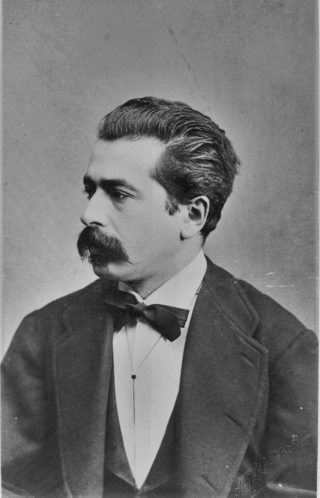
Henryk Wieniawski was a Polish virtuoso violinist, composer and pedagogue, who is regarded amongst the most distinguished violinists in history. His younger brother Józef Wieniawski and nephew Adam Tadeusz Wieniawski were also accomplished musicians, as was his daughter Régine, who became a naturalised British subject upon marrying into the peerage and wrote music under the name Poldowski.
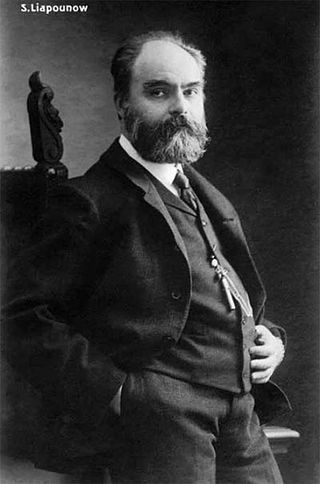
Sergei Mikhailovich Lyapunov was a Russian composer, pianist and conductor.
The Symphonie espagnole in D minor, Op. 21, is a work for violin and orchestra by Édouard Lalo.

Ferdinand Laub was a Czech violinist and composer.
Le Baiser de la fée is a neoclassical ballet in one act and four scenes composed by Igor Stravinsky in 1928 and revised in 1950 for George Balanchine and the New York City Ballet. Based on Hans Christian Andersen's short story Isjomfruen, the work is an homage to Pyotr Ilyich Tchaikovsky, for the 35th anniversary of the composer's death. Stravinsky elaborated several melodies from early piano pieces and songs by Tchaikovsky in his score. A commission by Ida Rubinstein from 1927, the ballet was choreographed by Bronislava Nijinska and premiered in Paris on 27 November 1928.

Pyotr Ilyich Tchaikovsky's Piano Concerto No. 2 in G major, Op. 44, was written in 1879–1880 and dedicated to Nikolai Rubinstein, who had insisted he perform it at the premiere as a way of making up for his harsh criticism of Tchaikovsky's First Piano Concerto. But Rubinstein never played it, as he died in March 1881, and the work has never attained much popularity.

Karl Friedrich Wilhelm Fitzenhagen was a German cellist, composer and teacher, best known today as the dedicatee of Pyotr Ilyich Tchaikovsky's Variations on a Rococo Theme.
Orchestral Suite No. 1 in D minor is an orchestral suite, Op. 43, written by Pyotr Ilyich Tchaikovsky in 1878 and 1879. It was premiered on December 20, 1879 at a Russian Musical Society concert in Moscow, conducted by Nikolai Rubinstein. The piece is dedicated to Tchaikovsky's patroness, Nadezhda von Meck.
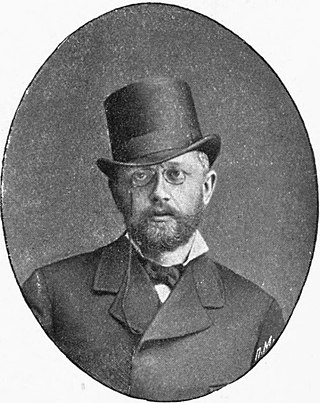
Souvenir d'un lieu cher, Op. 42, is a set of three pieces for violin and piano, written by Pyotr Ilyich Tchaikovsky in 1878.
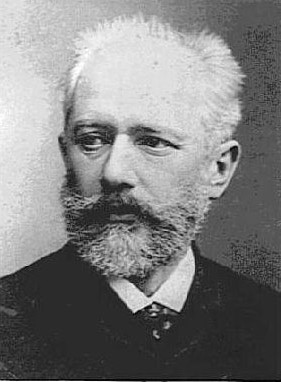
Pyotr Ilyich Tchaikovsky was a Russian composer especially known for three very popular ballets: Swan Lake, The Sleeping Beauty and The Nutcracker. He also composed operas, symphonies, choral works, concertos, and various other classical works. His work became dominant in 19th century Russia, and he became known both in and outside Russia as its greatest musical talent.

Jan Hřímalý was an influential Czech violinist and teacher, who was associated with the Moscow Conservatory for 46 years in 1869–1915.
The Grand Piano Sonata in G major, Op. 37, was written by Russian composer Pyotr Ilyich Tchaikovsky in 1878. Though initially received with critical acclaim, the sonata has struggled to maintain a solid position in the modern repertoire. Nevertheless, the sonata has been recorded numerous times and is recognized as one of the composer's masterworks. It is dedicated to Karl Klindworth.
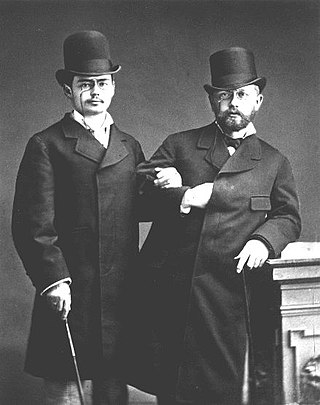
Iosif Iosifovich Kotek, also seen as Josef or Yosif, was a Russian violinist and composer remembered for his association with Pyotr Ilyich Tchaikovsky. He assisted Tchaikovsky with technical difficulties in the writing of the solo part in his Violin Concerto in D.
Sérénade mélancolique in B-flat minor for violin and orchestra, Op. 26, is a piece by Pyotr Ilyich Tchaikovsky that was written in February 1875. It was his first work for violin and orchestra, and was written immediately after he completed his Piano Concerto No. 1 in B-flat minor.

Stanisław Barcewicz was a Polish violinist, conductor and teacher. Although his repertoire included almost all of the classical and romantic violin literature, he was valued primarily for his interpretations of works by Henryk Wieniawski and Felix Mendelssohn. He also premiered works by his teacher Pyotr Ilyich Tchaikovsky, including the Polish premiere of the Violin Concerto in D. He played on a Guadagnini violin.
